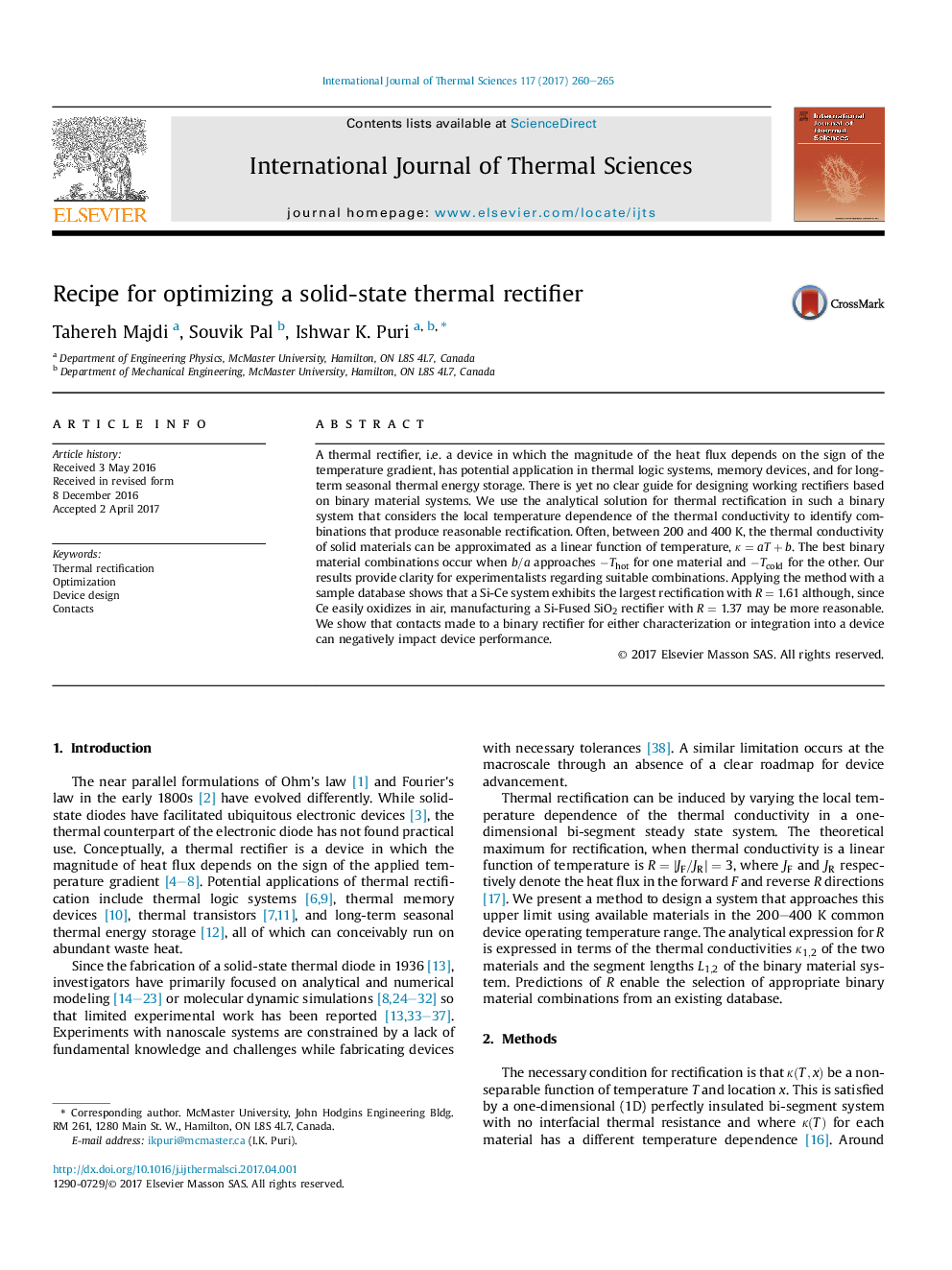| Article ID | Journal | Published Year | Pages | File Type |
|---|---|---|---|---|
| 4995405 | International Journal of Thermal Sciences | 2017 | 6 Pages |
Abstract
A thermal rectifier, i.e. a device in which the magnitude of the heat flux depends on the sign of the temperature gradient, has potential application in thermal logic systems, memory devices, and for long-term seasonal thermal energy storage. There is yet no clear guide for designing working rectifiers based on binary material systems. We use the analytical solution for thermal rectification in such a binary system that considers the local temperature dependence of the thermal conductivity to identify combinations that produce reasonable rectification. Often, between 200 and 400 K, the thermal conductivity of solid materials can be approximated as a linear function of temperature, κ=aT+b. The best binary material combinations occur when b/a approaches âThot for one material and âTcold for the other. Our results provide clarity for experimentalists regarding suitable combinations. Applying the method with a sample database shows that a Si-Ce system exhibits the largest rectification with R = 1.61 although, since Ce easily oxidizes in air, manufacturing a Si-Fused SiO2 rectifier with R = 1.37 may be more reasonable. We show that contacts made to a binary rectifier for either characterization or integration into a device can negatively impact device performance.
Related Topics
Physical Sciences and Engineering
Chemical Engineering
Fluid Flow and Transfer Processes
Authors
Tahereh Majdi, Souvik Pal, Ishwar K. Puri,
